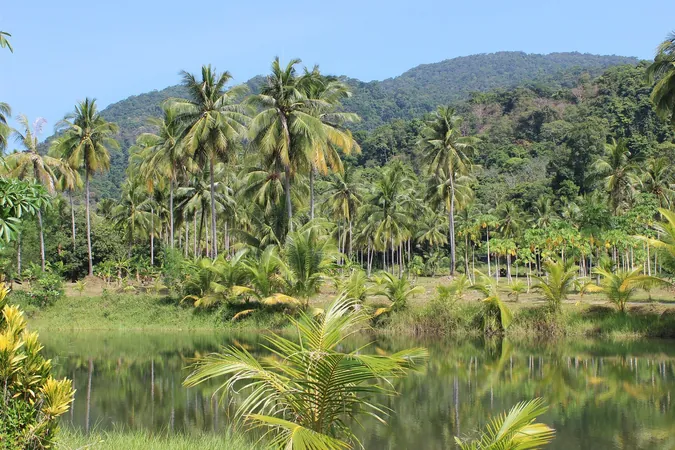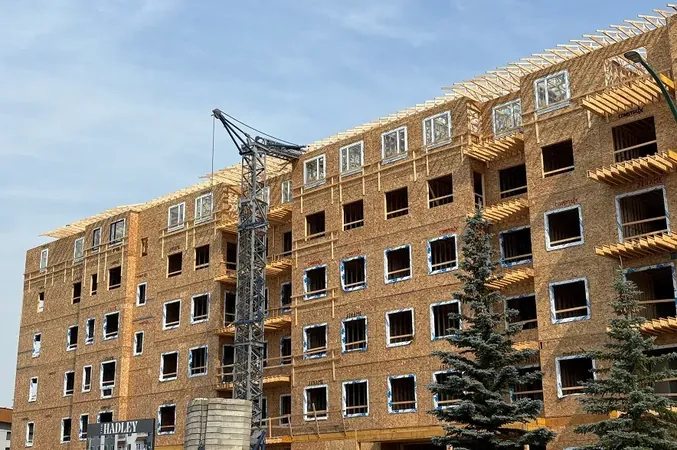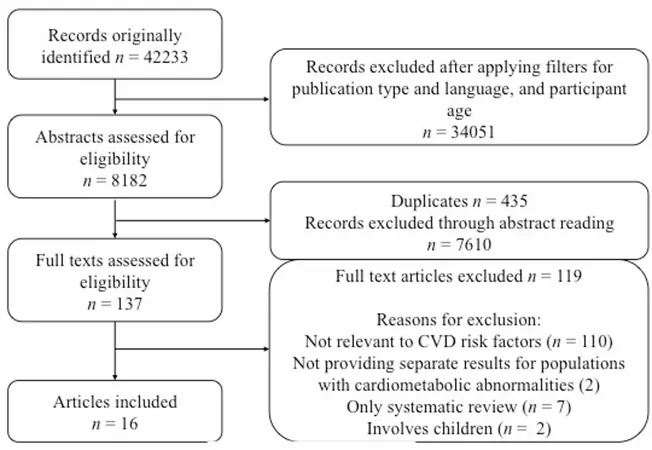
Revealing the Hidden Connection Between Amazon Rainfall and Ocean Currents: A Wake-Up Call for Climate Action
2025-06-09
Author: Jacob
Exciting new research from IIASA uncovers a surprising and crucial link between two climate phenomena: the lush Southern Amazon rainforest and the diminishing Atlantic Meridional Overturning Circulation (AMOC). This groundbreaking study indicates that while a weakening AMOC may temporarily cushion the blow of reduced rainfall in the Amazon during the dry season, it simultaneously underscores the mounting need for aggressive emissions reductions as the climate crisis deepens.
The Southern Amazon rainforest, a vital global ecosystem, is increasingly threatened by climate change and rampant deforestation. At the same time, the AMOC—a critical ocean current system that regulates climates around the world—is on the decline. Both the rainforest and the AMOC are considered "climate tipping elements," meaning shifts in either could lead to catastrophic and irreversible changes in our environment.
Led by researcher Annika Högner and in collaboration with the Potsdam Institute for Climate Impact Research and the Center for Critical Computational Studies in Frankfurt, this study marks the first time experts have identified a direct link between AMOC weakening and increased rainfall in the Southern Amazon.
Published in Environmental Research Letters, the research reveals that as the AMOC weakens, it cools the surface temperatures in the North Atlantic, resulting in more rainfall in the Southern Amazon during its dry season. The findings are startling: for every 1 million cubic meters per second of AMOC decline, there is a corresponding 4.8% surge in annual dry season rainfall in the Southern Amazon.
"The dry season poses the greatest vulnerability for the Amazon," Högner says. "Our study shows that the weakening AMOC is indeed contributing to increased rainfall during this critical period." However, while this discovery might seem promising, the broader picture tells a more alarming story.
Despite this increase in rainfall, the overarching trend shows that the Amazon is still experiencing a decline in moisture. Dry seasons are growing longer and more severe, and the study suggests that any buffering effect from the AMOC could be overshadowed by the detrimental impacts of deforestation and rising temperatures.
Co-author Nico Wunderling, a professor at C3S and scientist at PIK, cautions, "Even though our findings indicate a stabilizing interaction between the AMOC and the Southern Amazon, it cannot compensate for the ongoing drying caused by various external pressures. To fully grasp future risks, we must comprehend these complex interactions."
This research emphasizes the critical need for integrated climate risk assessments that take into account the interactions of tipping elements. The urgency to reduce greenhouse gas emissions is more pressing than ever, as pushing vulnerable systems like the Amazon past their limit could have irreversible effects.
Högner warns, "These interactions are not just theoretical; they are unfolding before our eyes. While some interactions may offer temporary stabilization, the overwhelming majority are detrimental. We cannot rely on the Earth to bear the consequences of our actions. The path forward is clear: we must dramatically cut greenhouse gas emissions and curb global warming."









 Brasil (PT)
Brasil (PT)
 Canada (EN)
Canada (EN)
 Chile (ES)
Chile (ES)
 Česko (CS)
Česko (CS)
 대한민국 (KO)
대한민국 (KO)
 España (ES)
España (ES)
 France (FR)
France (FR)
 Hong Kong (EN)
Hong Kong (EN)
 Italia (IT)
Italia (IT)
 日本 (JA)
日本 (JA)
 Magyarország (HU)
Magyarország (HU)
 Norge (NO)
Norge (NO)
 Polska (PL)
Polska (PL)
 Schweiz (DE)
Schweiz (DE)
 Singapore (EN)
Singapore (EN)
 Sverige (SV)
Sverige (SV)
 Suomi (FI)
Suomi (FI)
 Türkiye (TR)
Türkiye (TR)
 الإمارات العربية المتحدة (AR)
الإمارات العربية المتحدة (AR)